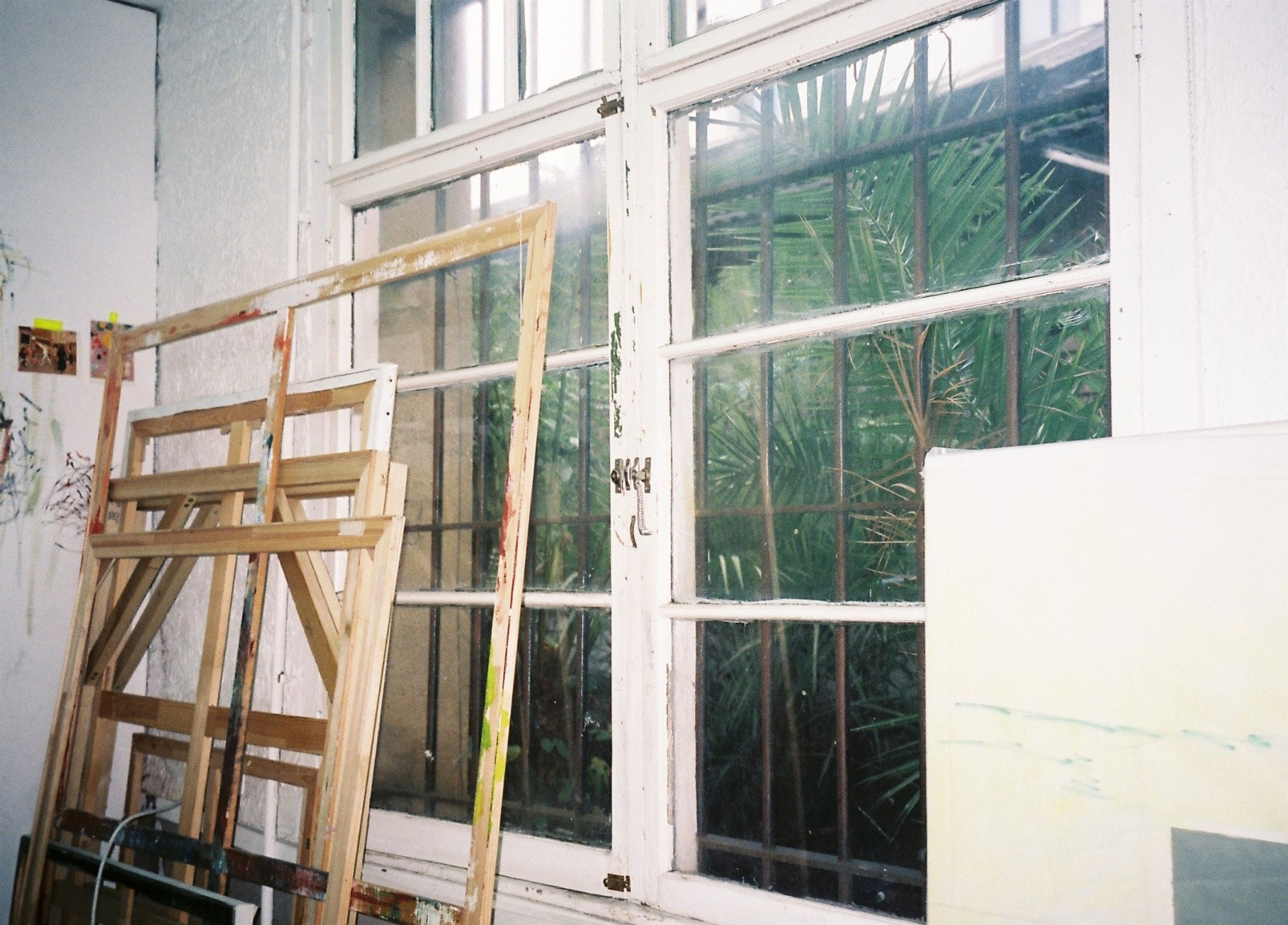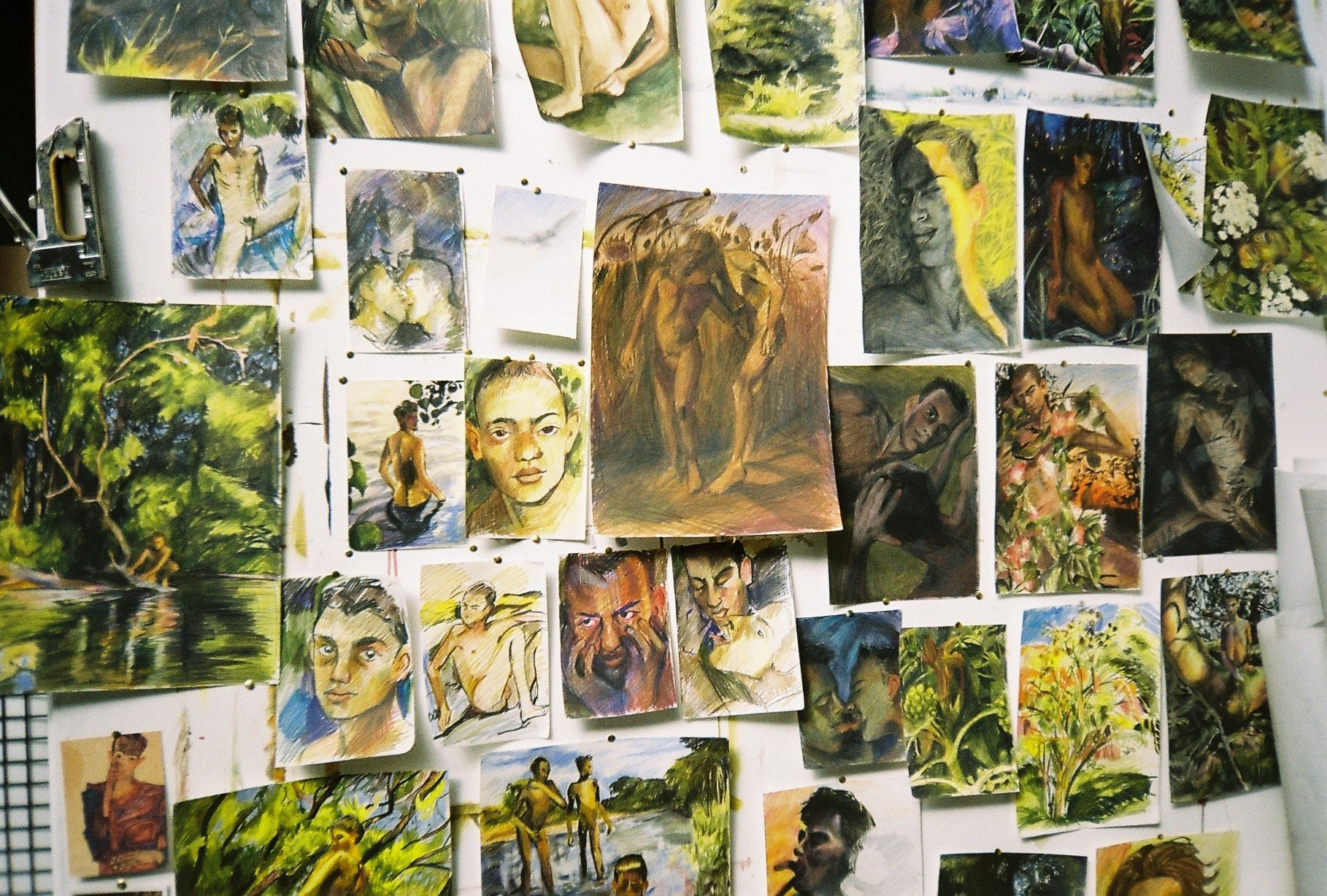






Untouched Abundance

on a blue mountain, against a red sky
pale forest in an indeterminate season
gingham for your basket—
—gather flowers for your hair
PLEASE, KEEP OFF THE GRASS
PLEASE KEEP THE GRASS
THE GRASS KEEPS ITSELF
trees stand close, tall and
branchless, trunks sentinel
in a tangle we walk
enacting the marks of paint on canvas
but also different
tree, blossom, cotton, soil, petal
leaf-surface, sky, grass, stem
meadow, branch, field, linen
sun-flower-yellow
corn-flower-blue
birch-tree-brown
into the forest or flower-meadow
tempting elysian perfection
ENTRY/NO-ENTRY
brought up short—


In the landscapes of Diane Chappalley’s paintings, flowers grow in such abundance that there would be nowhere to put your feet. To enter the picture would be to step in, on, against the plants that live their lives regardless of yours. They grow in a mass, a communicating community. As a viewer, you are initiated into these untouched places and simultaneously held at arm’s length.
The canvases demonstrate a slightly uncanny difference of perspective between picture plane and viewer – the horizon-line feels uncertain, the vanishing point is elusive. Chappalley uses this to enact the inaccessibility of the places she depicts, such as untouched carpets of flowers, or woods where the trees grow too close together to allow access for the human viewer’s body, making it impossible to imagine tracing out a path through the trees. The works express the paradox of wanting to find ‘untouched’ or ‘natural’ places, with the simultaneous knowledge that to touch them or step in them is to change them irrevocably.


Painted on unbleached linen, cotton or even colourful gingham, in these paintings lines become trees and daubs of paint become petals or flower heads – abstract forms that are made botanical through their context. Colour is used to evoke a mood or emotion, sometimes in unsettling ways. In some works, it’s hard to tell what season it is; the colour palette is contradicted by the types of flowers depicted or the state of the leaves on the trees, for instance.
Chappalley’s works play with the boundaries between decorative and fine art. A forest scene in four parts hangs on the wall in her studio, but it will eventually be shown in the form of a folding screen. Joined together by hinges, the panels will be free-standing, blurring the line between painting and object. Expectations of the continuity between exhibition space and pictorial space are again confounded, as angles and vanishing points shift with the viewer’s movements.


Working from imagination and memory, these paintings depict a version of reality that is constantly in flux and subject to the vagaries of both the human mind and the ever-shifting ecosystem. The worlds Chappalley creates are immediately known to the viewer from both art historical tradition and lived experience – forests, mountains, fields. But they also exist at a remove, suggesting the simultaneous familiarity and inaccessibility of the more-than- human world.
Diane Chappalley: Behind Closed Doors is on view at Informality, Henley-on-Thames, until 28 March 2020. For more information, visit here.
28.02.2020
Words by Anna Souter
Related
Journal

Reclaiming Commonality
Journal

